Nikhil Merchant recently dined at Kikunoi in Kyoto, which was awarded 3 Michelin stars in 2015, with the owner Chef Yoshihiro Murata, who has 7 Michelin Stars to his credit. The food blogger and restaurateur writes about his experience and discusses the popularity of Japanese cuisine in Mumbai
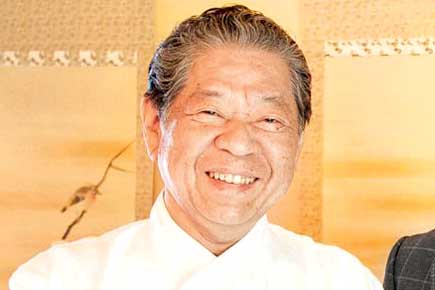
Chef Yoshihiro Murata
Trust the Japanese to pay attention to detail. A beautiful country, Japan is home to warm polite citizens, well-organised systems and is also a haven for food lovers. Last month, I visited Kyoto, a stunning prefecture of Japan, right on the outskirts of Osaka. Japan, in April, is simply breathtaking — you can feast your eyes on cheerful sights such as beautiful cherry blossoms in full bloom amid a cool balmy weather.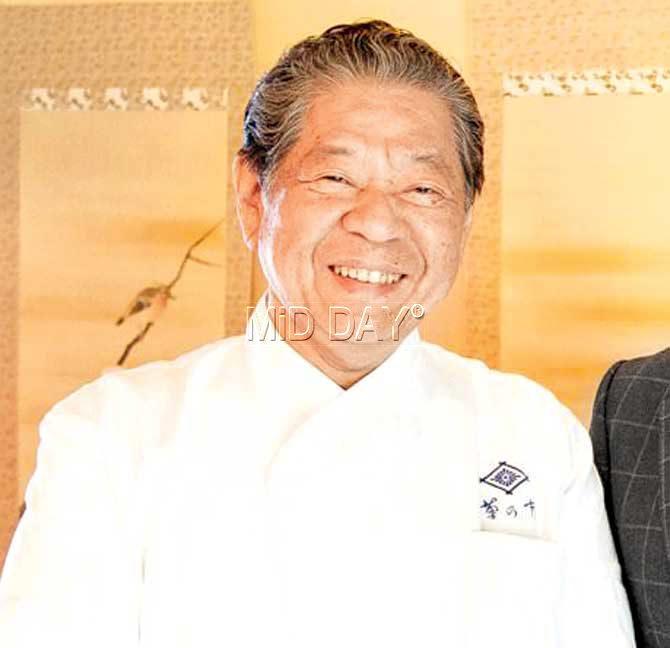
Chef Yoshihiro Murata
ADVERTISEMENT
The country's food culture is enticing — most restaurants, street-side cafes and vendors prop colourful signages of their menus, complete with pictures. Japanese cuisine is also visually appealing. The food is light, flavourful and one can eat six satiating meals a day without feeling overly full.
The cuisine heavily relies on the freshest catch from the seas, rich red meats, rice, pure and unadulterated vegetables and fermented condiments. I sample the best of Japanese cuisine at the traditional Japanese restaurant Kikunoi. The restaurant, which was established in 1912, serves fine Japanese cuisine and is located in the picturesque Gion-Maruyama district of Kyoto.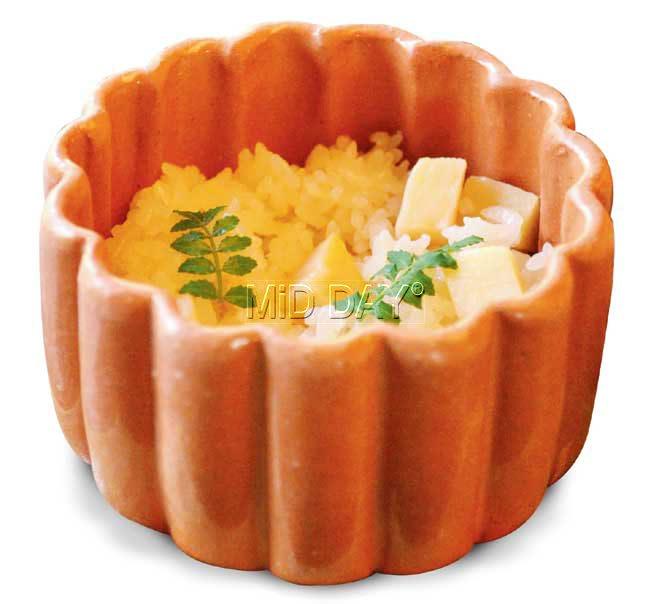
Enter Kikunoi and the restaurant exudes the warmth of a home. Here, I meet the owner, Chef Yoshihiro Murtata, who is trained in quintessential French cuisine at Ritsumeikan University. Born into the Kikunoi restaurant family, Chef Murata went on to work as an apprentice at the Kamome Restaurant in Nagoya after graduation and opened the Kikunoi Kiyamachi restaurant in 1976. The outlet went on to win three Michelin Stars in 2015 and his other two restaurants, subsequently, won two stars each. Murata's multiple culinary achievements made him Japan's most revered chef, with 7 stars to his credit.
A meal to remember
'Ryotei' is a dining style or experience that is particular to Japan. It is a synergy between the restaurant's fine architecture, refined food and the warm hospitality of the host. The cuisine served at Kikunoi is Kyo-kaiseki — a multi-course dining extravaganza, which reflects the rich traditions of Kyoto and is the most elaborate of Japanese cuisines.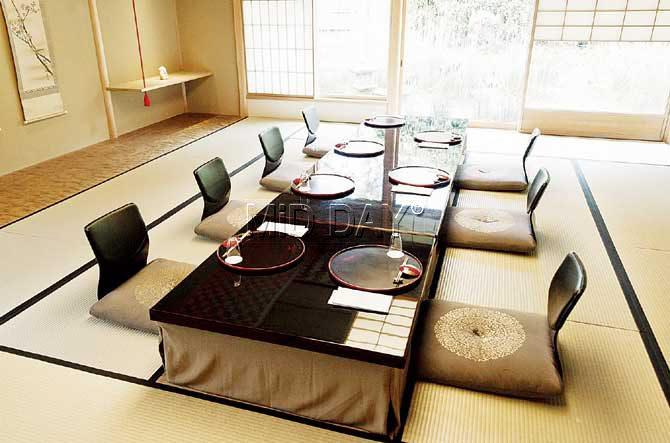
The restaurant's interiors are changed every season, by playing around with the cutlery, curtains and furniture, to provide guests with an immersive experience. In April, for instance, we are served food in light-coloured cutlery, which capture the mood of spring just right.
Kneeling down in true Kaiseki style, the meal begins with a limited edition (read: unlimited) of traditionally brewed Cherry Blossom Sake. The elixir, in the course of the meal, washes down every bite, thus refreshing your palate for the next one.
The menu, in the month of April, is themed around spring and each course is carefully constructed to reflect the theme. The first course, for instance, is an assortment of appetisers made to look like a garden of butterflies — tai (red sea bram) sushi with kinome, grilled squid with nori seaweed and egg yolk, fava beans, salt pickled 'firefly' squid and mountain yam.
The second course includes the freshest of fish meat – Sashimi of tai and young tuna are served with suizenji seaweed jelly, curled udo stalk and carrots and wasabi. Japanese wasabi is much milder than the one you are served in Mumbai — the latter is so pungent that it awakens your sense of smell even before your taste buds.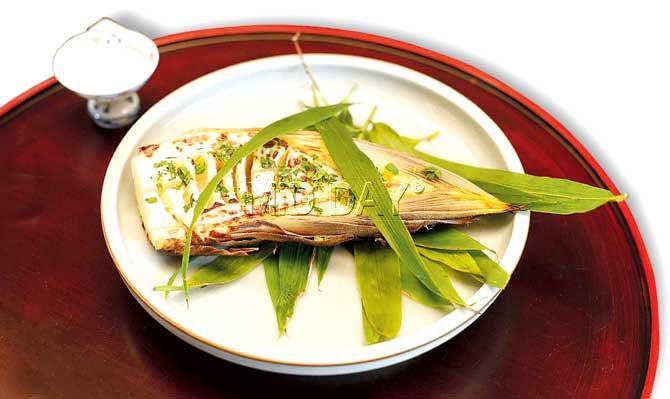
The Japanese wasabi, on the other hand, is aromatic. With the first bite, you are hit by the full blast of minced herb, which does not mask the innate flavour of the fish. Ingredients such as the wasaka tilefish, a delicacy in Japan, and the first 40-50 fish caught early in the morning form the third course. The fourth course is a clear favourite of most diners — a grilled halibut topped with egg yolk in a powdery form and kinome, giving the dish a herbaceous kick.
The fifth course is laden with Kinome (prickly ash leaf bud, one of my favorite herbs which is used extensively in the Spring menu) and includes Steamed Pot of Bamboo Shoot with wakame seaweed, rapini, and tai. The sixth course is a combination of kinome bamboo shoot rice served with pickled rapini and daikon radish, a side of udo stalk and pickled chopped eggplant and a succulent prawn dumpling in a bright green pea soup which swirls like clouds when stirred. And dessert is a chilled mango soup with pistachio ice-cream — the perfect dish to complete the meal.
The Japanese take their food seriously. So while it is easy to assume that the ryotei style of dining is popular only among Japan's elite, the truth is, in Kyoto, even ordinary folks often sign up for the elaborate dining experience where food takes centrestage.
Closer home
While India has its own version of 'Chinese' food, select palates enjoy Japanese cuisine. In Mumbai, the popularity of Japanese cuisine started off first with the inimitable restaurant Wasabi by Morimoto at The Taj Mahal Palace Hotel, which serves Japanese delicacies such as Black Cod Miso and has active Teppanyaki tables. San Qi at the Four Seasons & Pan Asian at the ITC Hotel in Andheri are other two restaurants that serve a traditional fare.
Japanese cuisine in India has seen its fair share of encumbrances. With our strict food safety laws and bans, delicacies such as wagyu, which originates from Japan and is the finest beef in the world, is no longer served. Many restaurants such as Umame and Yuuka contemporise the cuisine to match our palates by bringing in fresh sushi bars and sake experiences. Though they sate our Japanese cravings with popular flavours such as Miso, Togarashi and Rice Wine, a traditional Kaiseki experience, which is a lot more delicate with the full flavour of the meats and vegetables being the dominant factor, is yet to find its way onto our shores.
The writer is a restaurateur, food writer and a blogger at Nonchalant Gourmand
 Subscribe today by clicking the link and stay updated with the latest news!" Click here!
Subscribe today by clicking the link and stay updated with the latest news!" Click here!






